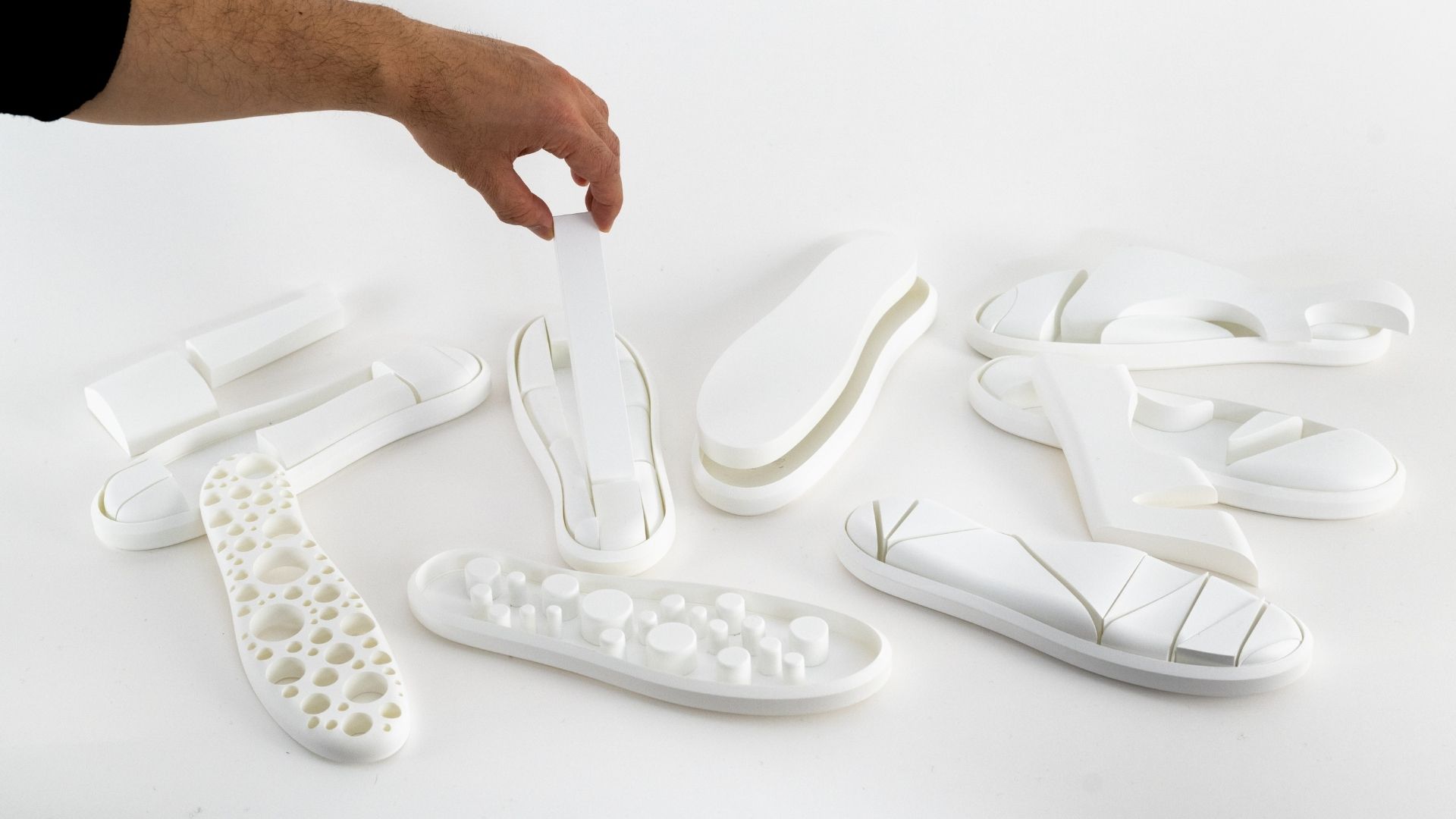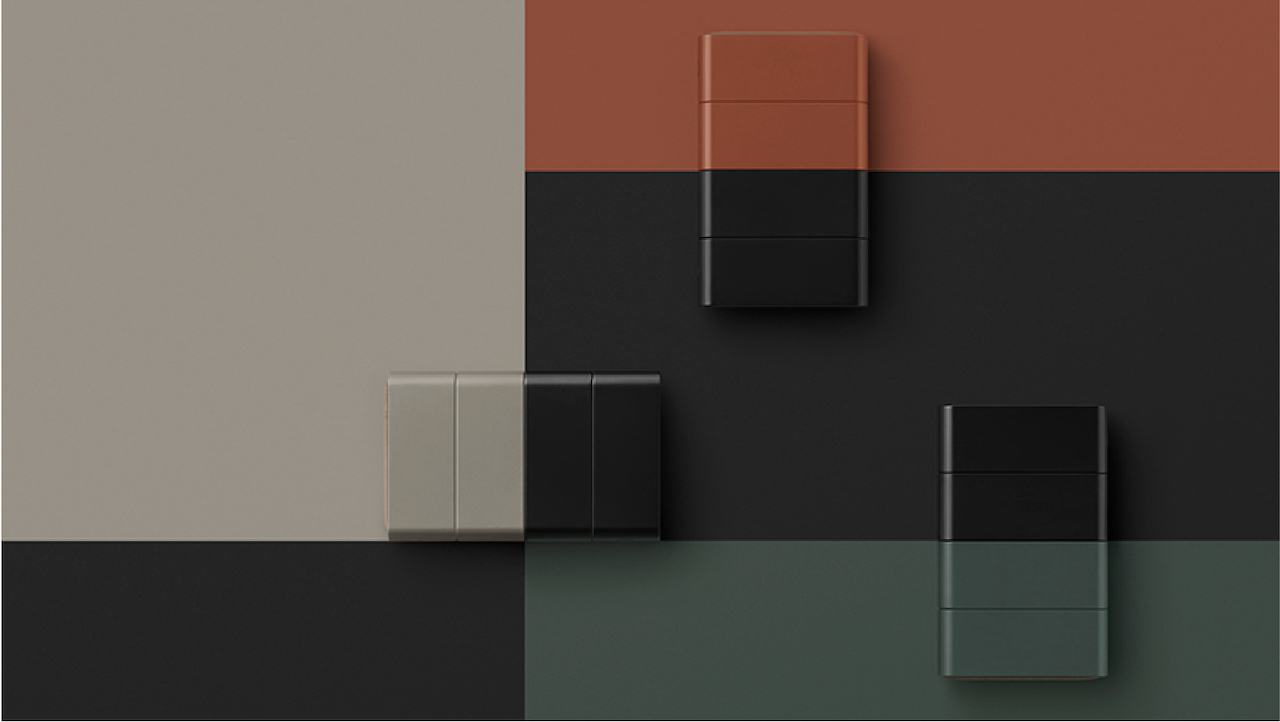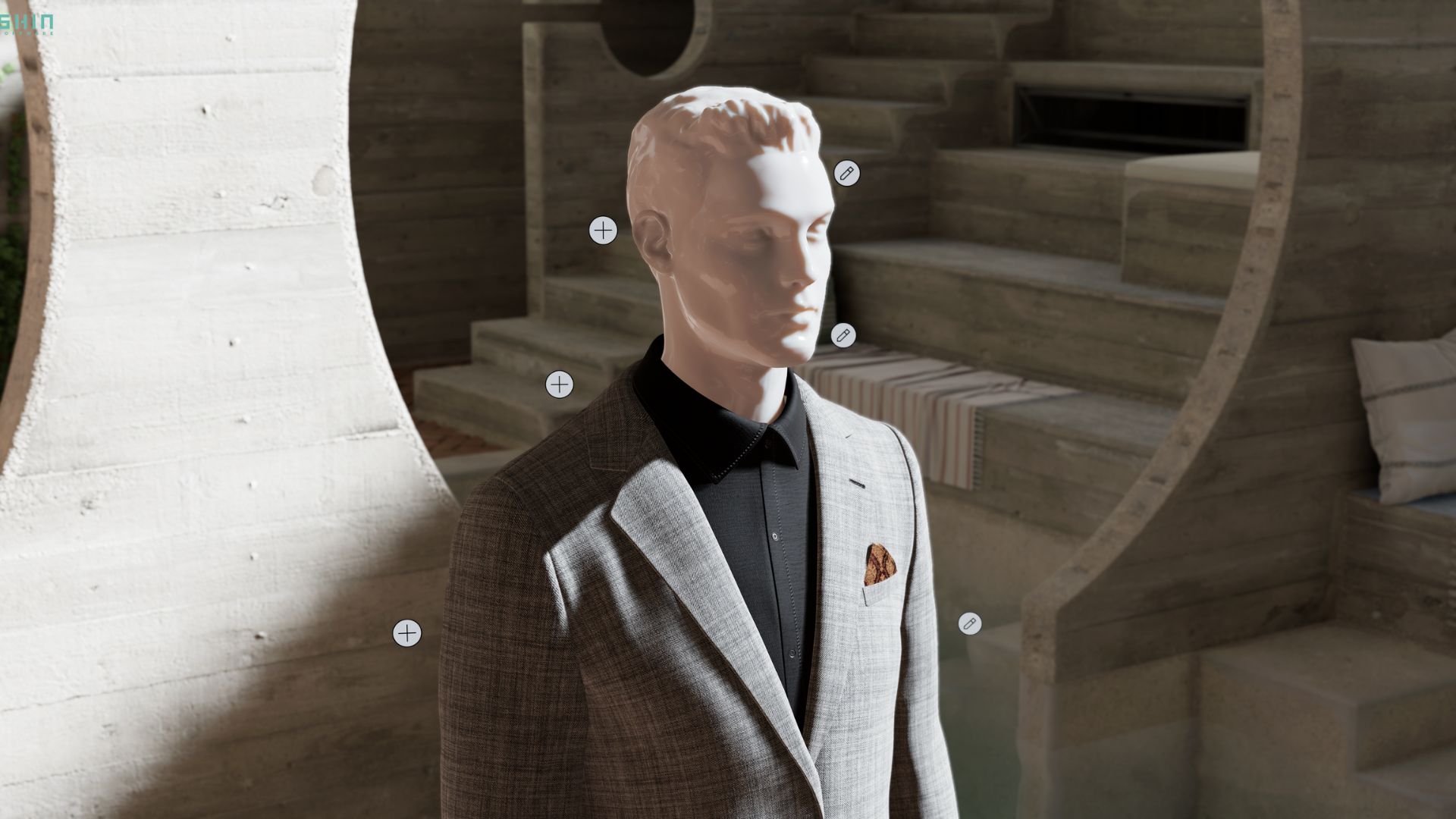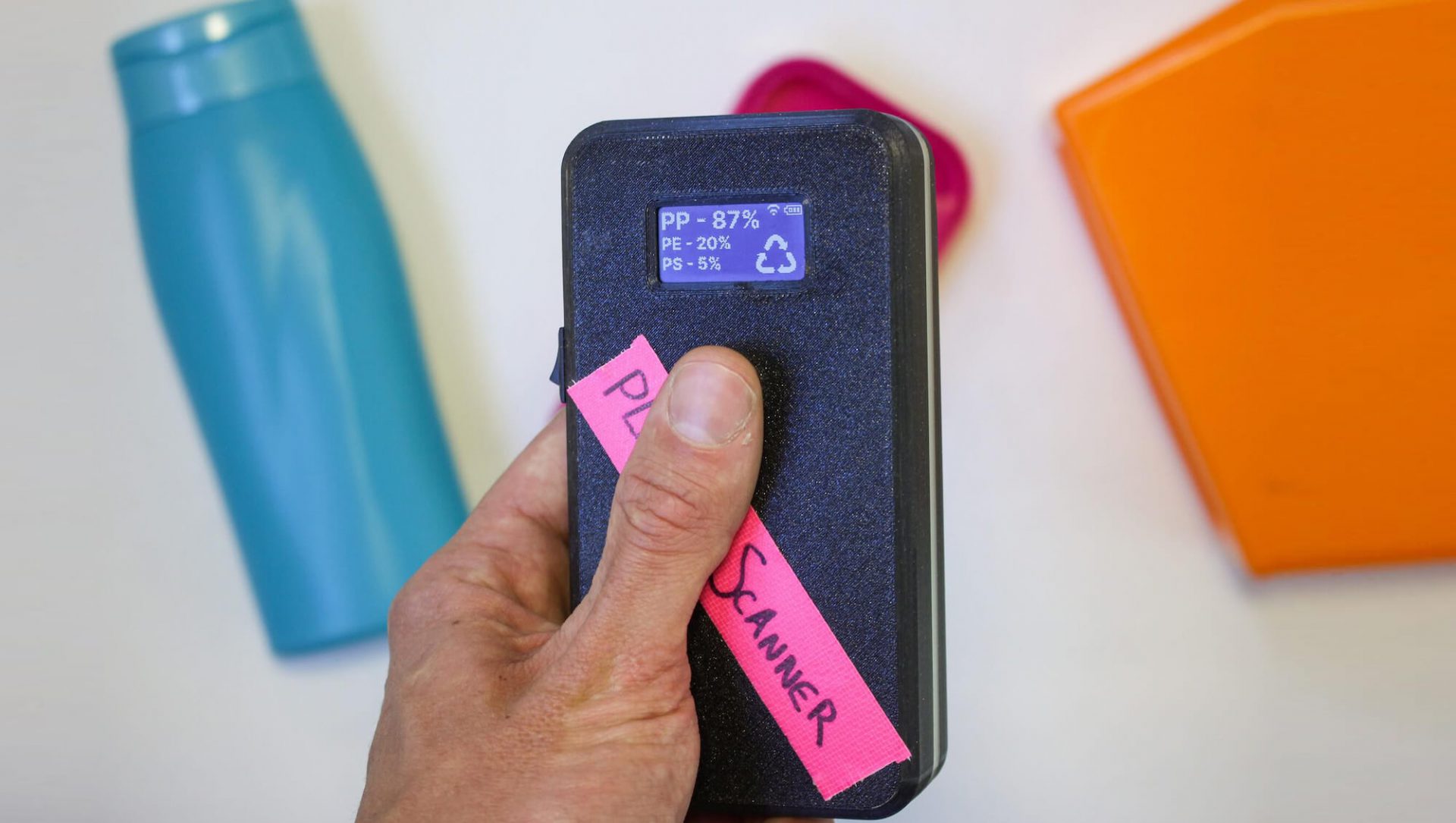Computational design experiment for older adult’s footwear
The era of living in an aging society has come. And the aging-related problems have become a global and complicated challenge.

According to the 2019 Revision of World Population Prospects, by 2050, people aged 65 or above will account for 25% of the population in Europe and Northern America.
The number of people aged 80 or above is estimated to triple from 143 million in 2019 to 426 million in 2050.
We often ask ourselves: How old is old?
The answer differs from person to person based on their family background, country, gender, education level, and even their health conditions.
But without doubt, the average life expectancy has increased.
The latest United Nations Population Division data reveals that people’s life expectancy (both sexes combined) in the world has increased from 47 years in 1950 to 73.2 years in 2020.

Many factors have influenced the growth of people’s life expectancy in the world.
For example, human beings have invented advanced technologies, established a sound medical and education system, set up well-developed policies by the government, and maintained a stable society.
Therefore, the perception and definition of the term “older adult” has changed.
As the size of the aging population has transformed and sped up the development of our world, now is a critical moment to view our society through a new lens of aging and consider our society from the physiological, psychological, governmental, user-experience, family, and cognitive perspectives.
Country leaders, scientists, educators, and engineers need to get involved.
And designers also need to play more critical roles and take bigger social responsibilities to solve these socio-technological and systemic challenges of aging collectively.
In this article, we used an indoor footwear design for older adults as a case study to demonstrate the implications and applications of the computational design.
Why do we choose to redesign indoor footwear for older adults in this research?
Since the level of mobility for older adults is a critical criterion of their life independence, indoor footwear might be the most direct physical product that is connected with older adults’ walking behavior to prevent them from falling at home.
Research also shows that the majority of older adults who are able to wear shoes regard this behavior as a symbol of continued independence, as one pervasive effect of aging is that their feet will undergo a significant loss of cutaneous touch and pressure sensation.
Figure 1. Indoor footwear computational design experiment (designed by Sheng-Hung Lee)

Field-driven design approach
We experimented with a field-driven design approach to prototype tailor-made footwear soles for older adults.
From the research of nTopology, an international computational design software company, we defined a value of each point of 3D space as a field.
For example, a field can represent a set of spatial data of physical quantities, such as temperature, stresses, or flow velocity in engineering studies.
For design studies, many engineering and design applications focus on 3D modeling.
These types of data are usually like scalar numbers.
We can use nTopology software to translate them into scalar fields: tensor fields, vector fields, and Boolean fields.
Fields can be modified by basic math operations—addition, subtraction, multiplication, and division—to either make them simpler to adapt to our needs or create more complex interactions.
To offer a better understanding of the difference between the field-driven approach and traditional CADing, we made a comparison of them in Table 1 to show both methodologies’ pros and cons with examples.

Experiment process and challenges
We worked closely with Alejandro Carcel Lopez, EMEA Senior Application Engineer at nTopology Inc., to understand the process and principles to help us create our own version of soles by applying data.
However, we used the existing material (people’s foot pressure data) from the nTopology example to remap it to fit the sole of our new indoor footwear design to simulate our hypothesis.
One key challenge lies in how to remap the pressure map data to the new shape of the sole.
When we used nTopology software, there were many steps to adjust the pressure map’s shape to the new sole design.
Due to the pandemic and the scope of the project, we didn’t have a chance to measure the older adults’ foot data directly from the field research.
For further study, we wanted to establish a series of human footwear data libraries for older adults including their feets’ dimensions, shapes, and some observations and insights to enable future footwear designers and medical teams, e.g., family doctors to gain comprehensive materials to refer to.
Since this is a three-week experimental approach, we didn’t have enough time to consider how to capture the data from participant’s feet as important input and process the data by translating it into accurate and useful information that designers or engineers can reference as a great starting point.
Figure 2. Translating people’s feet pressure data into footwear soles design with complex lattice structure and designs (one example from nTopology co-worked with Alejandro Carcel Lopez, EMEA Senior Application Engineer at nTopology Inc.)

Summaries and future opportunities
In this experimental approach, we found the following three key takeaways of applying a field-driven approach from nTopology software:
- Create affordable tailor-made services
- Leverage software compatibility
- Enable adaptive model building workflow, which benefits us in designing better indoor footwear for older adults and discussing the future digital design modeling opportunities.
1) Create affordable tailor-made services
The field-driven approach has made the CADing process more efficient, especially when designers or engineers work on complicated 3D models, e.g., use complex lattice designs to optimize the structure.
The increased speed achieved for CADing through a field-driven approach has enhanced the benefit of faster iterations: the potential opportunity of tailor-made footwear design, which allows us to try various versions in a short time catering to different users’ needs.
For example, we used one participant’s foot pressure data to specifically create his/her footwear soles to alleviate his/her foot pain issue.
For future research, if we can measure customers’ feet before they purchase footwear, they will receive not only their own tailor-made footwear soles but also shoes whose style, pattern, or colors provide a more personal and comfortable wearing experience.
The field-driven approach can offer customers an affordable tailor-made footwear service and might disrupt the current footwear design and manufacturing process and increase user expectations.
Figure 3. Side views of six indoor footwear computational design ideas (designed by Sheng-Hung Lee)

2) Leverage software compatibility
Unlike traditional CADing software designing for building 3D models, nTopology software and its field-driven approach are more like providing a platform with great compatibility by integrating with other 3D software, e.g., SolidWorks and Rhinoceros 3D.
In short, nTopology can import various file types and build on existing CADs, designs, or prototypes to improve its engineering performance or aesthetics.
The software compatibility has greatly maximized the power of field-driven design, giving designers or engineers the flexibility to integrate their 3D models effortlessly.
The field-driven approach can show its software compatibility to provide an open platform to foster creativity.
Figure 4. Six different indoor footwear sole computational design ideas (designed by Sheng-Hung Lee)

3) Enable adaptive model building workflow
Another benefit of using a field-driven approach is the adaptiveness and scalability of nTopology workflow.
Design or engineering teams need only set up one main workflow that can correlate measurable data, e.g., people’s feet pressure data, so that nTopology software can build automatic solutions based on different parameters e.g., environment conditions, materials features, temperature.
Therefore, the main cost of design efforts will lie in building the one main workflow to solve various complex geometries models and create new design possibilities that are impossible to CAD or import from traditional CADing software.
Figure 5. Back views of six indoor footwear computational design ideas (designed by Sheng-Hung Lee)

Adaptive workflow saves people much time from routinely manual tasks, e.g., model programming, because nTopology software can do such tasks better due to its well-designed AI algorithm.
For example, one French company, Medical 3D, has applied the adaptive and scalable features of the software to their medical-product 3D-printing business: custom orthotics, veterinary prostheses and other software solutions.
They use a field-driven approach in customized and automated product printing processes so that they can provide more tailor-made printing services with not only less time in design and manufacturing but also more robust structural design and optimization to benefit more patients who need the medical product printing service.
Figure 6. Envision future indoor footwear design for older adults by using a field-driven approach (designed by Sheng-Hung Lee)

About the Author
Sheng-Hung Lee is a designer, MIT AgeLab researcher, MIT xPRO course experience designer, MIT Office of Sustainability fellow, and Chair at IDSA Boston.
He is inspired by multiple domains of knowledge, different perspectives, and he thrives on creating new value for clients on multi-disciplinary teams.
He is trained as an industrial designer and electrical engineer, and his approach to problem solving is influenced by his passion for how design and technology impact and can be integrated into society.
He was invited to be a jury member for multiple international design competitions including IDEA, Spark Design Award, IDA Award and A’ Design Award and Competition.
Sheng-Hung is a member of World Design Organization (WDO), Asia Designer Communication Platform (APD), Taiwan Society of Technology and Sociology, Phi Tau Phi Scholastic Honor Society, and China Technical Consultants Inc.
Lee graduated with a double Bachelor’s degree (Hon.) in Industrial Design and Electrical Engineering from National Cheng Kung University (NCKU), Taiwan.
He currently purses his dual master’s degrees at MIT Integrated Design & Management and MIT Department of Mechanical Engineering.
His work has won prestigious awards including IDEA (Gold), iF Award (Gold), Braun Prize, Core77 Design Award, Red Dot (Best of the Best), Spark Design Award, and European Product Design Award (Gold).
His works have also been showcased in Dubai Design Week, Venice Design Week, and the Cooper Hewitt museum.
In 2019, He won a designer in residence scholarship sponsored by the Germany government, EMMA Creative Center, and Pforzheim University to stay and to exhibit his design at Stuttgart.
Lee taught product design at Fudan University Shanghai Institute of Visual Art and Detao Masters Academy as an adjunct Associate Professor from 2015 to 2019.






